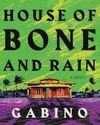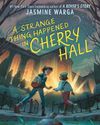
I began my writing career as a devoted outliner, but I always felt like there was a better way. Despite developing a deep knowledge of the major outlining methods, something about fleshing out my story before I wrote it didn't jibe with my personality.
My 10th book exhausted my patience with outlining for good. I spent 40 hours on an outline, only to discover that I was deviating from it with almost every chapter.
My characters ignored everything I planned. The outline felt like wasted time.
After writing an outline that failed, I thought, Why am I spending all this time on an outline, only not to use it?
Suddenly, I found myself trying the pantsing method (also known as discovery writing, or, more simply, writing without an outline). It terrified me, but I knew that outlining wasn't the answer.
I wish I had done it sooner. Twenty novels later, I can say that mastering how to write a novel without an outline was the best thing that ever happened to my writing.
I am a serial pantser now, and I can't imagine going back.
To help writers unlock their inner pantser, I wrote a book called The Pocket Guide to Pantsing. I also published several videos on writing without an outline on my YouTube channel, "Author Level Up." These resources have helped thousands of writers master this unique and often-misunderstood writing method.
Here are the two most common problems I see with new pantsers:
1. They're terrified of the process.
2. They're not sure if they're doing it right.
The focus of this article is not to stoke the fires of that great plotting versus pantsing debate, but to empower pantsers with practical tips so they can write their next novel with confidence.
Let's Talk About Fear
It's easy to become overwhelmed when writing your first novel without an outline.
This story is from the July - August 2023 edition of Writer’s Digest.
Start your 7-day Magzter GOLD free trial to access thousands of curated premium stories, and 9,000+ magazines and newspapers.
Already a subscriber ? Sign In
This story is from the July - August 2023 edition of Writer’s Digest.
Start your 7-day Magzter GOLD free trial to access thousands of curated premium stories, and 9,000+ magazines and newspapers.
Already a subscriber? Sign In

Writing for a Warming World - Imagining the overwhelming, the ubiquitous, the world-shattering.
Climate change is one of those topics that can throw novelists—and everyone else—into a fearful and cowering silence. When the earth is losing its familiar shapes and consolations, changing drastically and in unpredictable ways beneath our feet, how can we summon our creative resources to engage in the imaginative world-building required to write a novel that takes on these threats in compelling ways? And how to avoid writing fiction that addresses irreversible climate change without letting our prose get too preachy, overly prescriptive, saturated with despair?

Kids' Author Meg Medina Inspires Readers
WD chats with the National Ambassador of Young People’s Literature.

The Horrors of Grief
Whether hot off the presses or on the shelves for years, a good book is worth talking about.

The Mystery of Growing Up
New York Times-bestselling author Jasmine Warga tackles a new genre with her signature blend of empathy for her readers, agency for her characters, and the belief that art is the great connector.

Education
Even if it's not your thing, you're probably familiar with the term dark academia.

A Do-Over Romance
Karin Patton, the first-place winner of the 24th Annual Writer's Digest Short Short Story Awards, shares a funny story about secondchance love and a brief Q&A.

Everyday Wonder
How to mine awe from the mundane

From Ordinary to Extraordinary
Unveil the hidden beauty in the facts and transform your nonfiction with the power of wonder.

Childhood: Our Touchstone for Wonder
How to get in touch with Little You and create big new work for today.

Agent Roundup
22 agents share details, about what kind of writing will pique their interest and offer tips for querying writers...